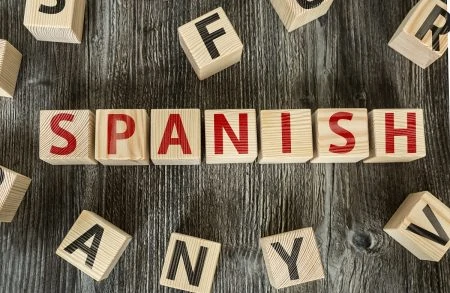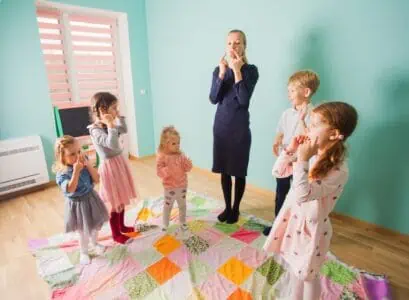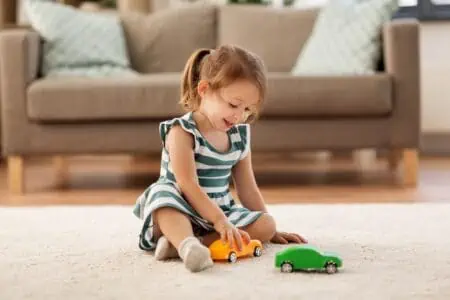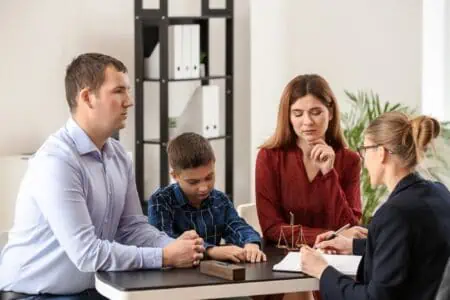If you want to teach your kids Spanish, there are almost limitless ways to do it. From structured lessons with a teacher to chatting during dinner, there’s no single right method.
Below are tried-and-true ideas to spark your plan. Mix and match them to fit your child’s age, interests, and your family rhythm.
Key Takeaways
- Young children pick up sounds faster, but kids and teens can become fluent with consistent exposure.
- Everyday activities — talking at home, reading, cooking, and play — make language learning natural and fun.
- Combine resources: apps, native speakers, books, and immersion for the best results.
- Keep sessions short, goal-driven, and rooted in things your child already loves.
What Age Is Best To Teach A Child Another Language?
Babies can hear the sounds of every language. Between about 10 months and a year, they start tuning into the sounds they hear most (1).
That early window makes picking up pronunciation and rhythm easier. Still, older kids and teens can learn very well too. Motivation, consistent exposure, and practice matter more than age (2).
The Benefits Of Teaching Kids Spanish
Spanish is one of the world’s most widely spoken languages and ranks highly for native speakers (3). Teaching your child Spanish does more than add vocabulary. It can:
Broaden Horizons
Knowing Spanish opens books, films, and music from many cultures. That expands the ideas your child encounters and the people they can connect with.
Give an Academic Advantage
Many schools offer Spanish from elementary through high school. Early familiarity can make classroom learning smoother and give students options for advanced study.
Enhance Travel
Travel is richer when you understand the language. Kids who know Spanish can talk with locals and read signs, menus, and museum labels with confidence.
Build Confidence
Mastering a second language boosts self-esteem. Kids feel proud of new skills and more willing to try things outside their comfort zone.
How To Teach Kids Spanish
Formal lessons have their place, but regular, low-pressure exposure is where language sticks. Below are concrete, practical methods you can use today.
1. Speak Spanish At Home
Use Spanish for routines: mealtime, bedtime, or naming objects. Short, natural phrases work best. Kids learn when words connect to real actions.
2. Learn Together
Parent-child classes let you model effort and make mistakes publicly. Your progress motivates your child and keeps learning shared.
3. Explore YouTube
YouTube has many kid-friendly Spanish channels and short lessons. Use themed videos — colors, shapes, animals — to reinforce vocabulary.
You can also watch favorite characters dubbed in Spanish to pair comprehension with fun.
4. Try Language Teaching Apps
Test free versions of apps like Lingokids and Duolingo Kids to see what your child enjoys. Try several before buying a subscription.
5. Watch Cartoons In Spanish
Pick shows your child already knows. Familiar plots make it easier to map new words to actions and dialogue.
6. Play Learning Games
Games make practice feel like play. For sentence building, try games such as KLOO. They’re portable and useful for travel.
7. Use Labels
Label toys, furniture, and pantry items in Spanish. Read labels together if your child is learning to read.
8. Seek Out Native Speakers
If you’re not fluent, find friends, babysitters, or tutors who speak Spanish kindly and patiently. Positive correction helps more than constant criticism.
9. Make It About Culture
Cook recipes, listen to music, and celebrate holidays from Spanish-speaking countries. Cultural context makes words meaningful.
10. Consider Formal Lessons
Some kids thrive in structured classes with clear goals. Try different teachers until you find one who connects with your child.
11. Read Bilingual English/Spanish Books
Bilingual books bridge reading and vocabulary. Classics and culturally rich titles both help. We recommend these kid-friendly picks: A Treasury of Curious George, The Very Hungry Caterpillar, and newer culturally focused selections like A Mexican Food Alphabet Book.
12. Find Extra-Curricular Activities
Look for art, sports, or music groups taught in Spanish. If your child is easily overwhelmed, wait until they have basic comfort with the language.
13. Listen To Audiobooks
Audiobooks expose kids to natural grammar and varied speech. Pair audio with a printed book so kids can follow along.
Narration gives the formal structure and character speech shows informal language your child can mimic.
14. Seek Out A Pen Pal
A pen pal offers low-pressure writing practice and cultural exchange. Letters teach grammar, spelling, and real communication.
15. Look For Immersive School Programs
Immersion schools use Spanish most or all of the day and are designed for kids with minimal prior exposure. They can be highly effective.
16. Explore TeachersPayTeachers
TeachersPayTeachers.com has printable activities, worksheets, and lesson ideas you can adapt for home. Many are free or low-cost.
17. Don’t Forget Flashcards
Use flashcards for quick, targeted drills. Make them into games to keep practice lively.
18. Play Spanish Scrabble
Spanish Scrabble matches letter frequency in Spanish and supports spelling practice. It’s a fun way to improve vocabulary.
19. Sing
Music helps words stick. Songs combine rhythm and repetition, which makes memorization easier and more fun.
20. Remember, Subtitles Are Your Friend
Use Spanish subtitles with Spanish audio or Spanish subtitles on dubbed content. They help readers link spoken words to written forms.
21. Play
Many bilingual toys teach vocabulary through play. For toddlers, devices like the LeapFrog Little Office Learning Center combine speech, printed words, and music.
22. Fingerplay
Fingerplays and movement songs help kinesthetic learners and work well with mixed-language groups.
23. Write In Spanish
Writing helps kids figure out grammar and sentence structure on their own. Try short journals, postcards, or captions for family photos.
24. Explore Via The Internet
Visit museums, zoos, and historic sites in Spanish. Browse Spanish-language kid sites about dinosaurs or space to learn vocabulary tied to interests.
25. Cook
Cooking together teaches practical vocabulary and gives a tasty reward for effort. Follow a Spanish recipe and compare ingredient words.
26. Set Simple Goals And Routines
Small, consistent goals beat occasional marathon sessions. Try five minutes of new words each day, one Spanish story a week, or a nightly Spanish phrase. Routines reduce friction and build habit.
FAQs
Posibilidades Infinitas
The internet offers tons of resources, but you don’t need screens for success. Play, read, cook, and chat in Spanish whenever you can.
Make it part of your family life. Keep it fun, consistent, and tied to what your child already loves, and the language will follow.







